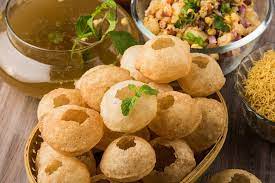
How India Speaks Through Food
Food culture is a defining cultural and civic norm that corresponds to the social, emotional, and spiritual realms in India. But it is also a tool of power that contributes to producing the untouchable (Appadurai 1981).
In Northeast India, Dalit and tribal communities continue to be labeled as ganda, or dirty, for their food practices. This is a persistent discrimination that stems from the conditioned caste knowledge about sensorial order and aesthetics.
A Taste of India
India is one of the world’s greatest culinary powerhouses. Its blazing curries, grilled tandoori meat, yogurt-based sauces, crispy poppadum, fragrant rice and breads have become an essential part of diets across the world.
The flavor of Indian food varies greatly from dish to dish and region to region. Some dishes are spicy while others are mild.
This is great news for anyone who may be a bit shy about heat, as there are plenty of non-spicy dishes to choose from! For example, a balance of spices is often used to make curries that are not overly hot.
This idea is reflected in restaurants throughout the country. Many of these restaurants have re-invented traditional dishes to appeal to a new clientele. This is evident in the creation of tandoori chicken, black dal and medu vada (potato fritters). These innovations are rooted in local traditions and re-invent themselves to appeal to a new generation.
A Taste of Culture
India is a land of diverse cultures, music styles, dance forms, philosophies and cuisines. The food culture in India reflects the rich heritage of Indian people.
The food in India is made of various herbs and spices like turmeric, cardamoms, cloves, ginger, ajwain and many more. These are used to bring out the taste of the dish.
There are different tastes in every dish, it can be spicy, sweet, salty or bitter. In a country like India, the food tastes change after every few miles.
The food in India is shaped by climate, land, and access to natural resources. It is also influenced by religious beliefs and social norms, such as caste-based purity and pollution taboos.
A Taste of Tradition
In India, food has an enduring relationship to culture. It is a central part of social and communal practices, an important symbol of identity, and a key element in settling disputes and welcoming guests.
In Indian culture, a range of foods are associated with particular seasons or religious festivals. They are served during meals at temples and offered in consecrated rituals.
One of the most classic dishes is dal tadka, a traditional lentil-based dish from northern India. It is typically served with jeera rice and roti.
Another classic is masala dosa, a savory snack made with fermented mashed lentils and rice that is often eaten as a breakfast item. Paratha, a flaky layered bread, is also an integral component of Indian cuisine.
A Taste of the Future
In an increasingly cosmopolitan Indian society, consumers are seeking a greater variety of food and eating styles. The gap between Indian and western tastes is closing, says Narayanan, a 17-year Nestle veteran.
The country’s growing interest in health and wellness has also prompted many to explore dietary options that are healthier than those previously available. These include plant-based diets and the consumption of fish as a protein source.
Among those who produce or cook food, WhatsApp has become an essential tool for sharing recipes and information. In a country where culinary traditions are often spoken but not written, it’s a forum where people from various generations can document and codify their knowledge in a way that allows them to share and sell the recipes.
In addition to facilitating collaboration, WhatsApp has also helped farmers connect with their peers and solve issues that might otherwise have been overlooked or misunderstood. The service has also spawned a host of groups where farmers and other professionals can exchange ideas and ask questions, enabling them to make better decisions about how to grow, harvest and store their products.


